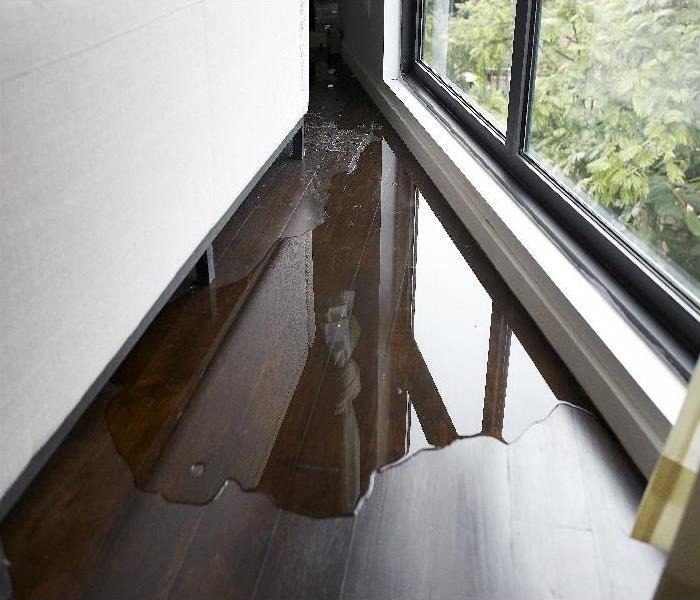Do Professionals In Advance Use Different Restoration Tools Than I Do?
7/12/2020 (Permalink)
 Water damages vary from one home to the next, making the steps necessary to restore your property unique.
Water damages vary from one home to the next, making the steps necessary to restore your property unique.
When you hire our SERVPRO team to restore water losses in your Advance home, we arrive with the full measure of our premier equipment!
Much like any trade, the right tools can make restoration and recovery more efficient and cost-effective for your Advance home. Knowing what your property needs are the first step in choosing the right tools and devices to restore it to its preloss condition. Our professionals have an extensive array of available equipment to suit a spectrum of severity ranging from small water loss incidents that impact a single room of your home to widespread conditions that can potentially destroy an entire property.
Restoring water damage in Advance homes requires a fast and deliberate response after recognizing a problem. When our technicians first arrive at your damaged address, we have a finite amount of time to overcome specific obstacles such as standing water, saturation, and compromising conditions for the contents of your home. Ultimately, the water restoration process can get broken down into three main branches:
• Extraction
• Drying
• Cleaning
What Tools Are Best for Extraction?
The removal of standing and surface water is one of the vital elements of restoring your home when our professionals arrive. Extraction is not a one size fits all solution for the property, however. Various tools and pieces of equipment are necessary to eliminate surface threats efficiently depending on the severity of the damage, the depth of standing water, and the areas where this water has migrated. With pre-stocked trailers build with water removal equipment and other water restoration tools, we can arrive at your damaged address with nearly all of our extraction tools with our team. These include:
• Submersible Pumps – Between electric and gas-powered models, submersible pumps are among the fundamental tools used in removing standing water from areas of your home. These units are useful for standing water deeper than two inches.
• Truck-Mount Pumps – For water losses spread throughout a large area of your property and featuring several inches or even feet of standing water, our most powerful extractor might be necessary. This pump runs off an engine of a truck in our Green Fleet and removes water at 300 psi.
• Wet Vacuums – For smaller amounts of surface water still too considerable for mops and toweling, vacuums can help to get the situation under control.
• Carpet Wands – Carpet wands are attachments ideal for removing trapped water in carpet fibers. These work with extractors that we already use, including wet vacuums.
What Advanced Tools Get Used for Drying Water Damage?
The drying process is one of the lengthiest portions of restoration. Each exposed area of your house must get focused drying attention to prevent lingering moisture concerns that could facilitate mold growth and structural deterioration. To accomplish this thorough drying, we can utilize many advanced tools and technologies to evaporate water and trapped moisture in materials. While there are dozens of tools and units that can get used from one damaged home to another, there are a few primary drying machines that help to eliminate the water quickly from exposed materials, contents, and environments. These include:
• Centrifugal Air Movers – Air movers focus blasts of heated air at specific points. Axial models can address more significant open areas, but these units get positioned to target individual sections of damp materials.
• Positive Pressure Systems – Wall systems feature structural cavities that can be ideal locations for pooling water and trapped moisture. Positive pressure systems utilize several discreet holes to infuse these structural cavities with dry, heated air to promote evaporation.
• Desiccant Dehumidifiers – Dehumidifiers are tools that are vital centerpieces for moisture content reduction and humidity management. Desiccants can remove not only excess moisture in the environment, but also exhausts dry air back into the damaged area to increase evaporation.
How Challenging is Cleaning After a Loss?
Water removal and drying might seem like the focal points of water restoration, but cleaning is one of the vital points as well. Depending on the severity of the water loss, this phase can be challenging. Ultimately, residues and debris can be the most substantial obstacles throughout the property. Cleaning up after a loss involves many direct approaches, including:
• Carpet Cleaning
• Surface Wipe Cleaning
• Deodorization
• Debris Removal
• Pre and Post Construction Cleaning
• Wood Flooring Restoration
Water damages vary from one home to the next, making the steps necessary to restore your property unique. No matter what your property needs, you can count on the experienced technicians and cutting-edge equipment of our SERVPRO of Davie & Yadkin Counties team to make it “Like it never even happened.” Give us a call today at (336) 677-1415.

 24/7 Emergency Service
24/7 Emergency Service